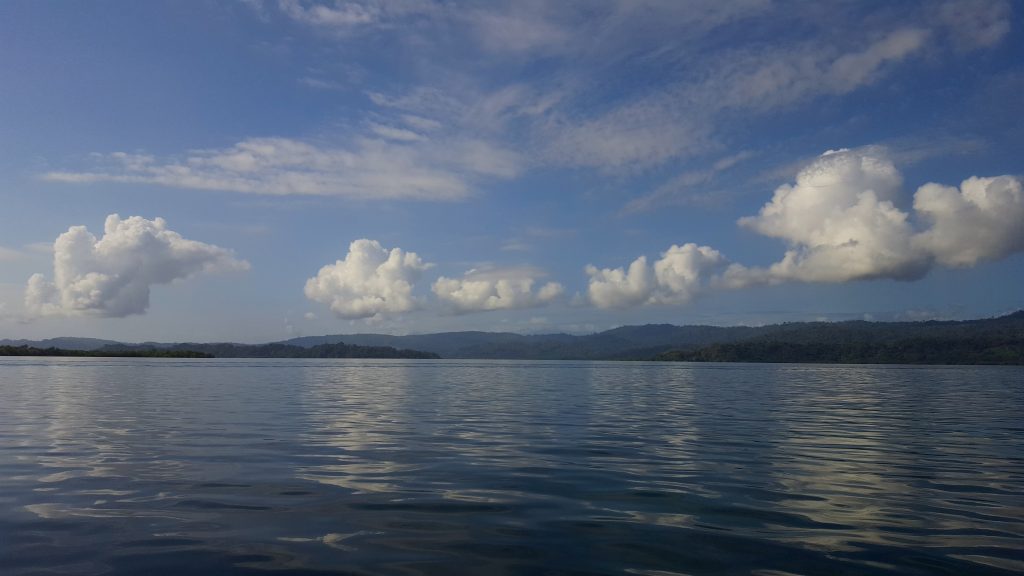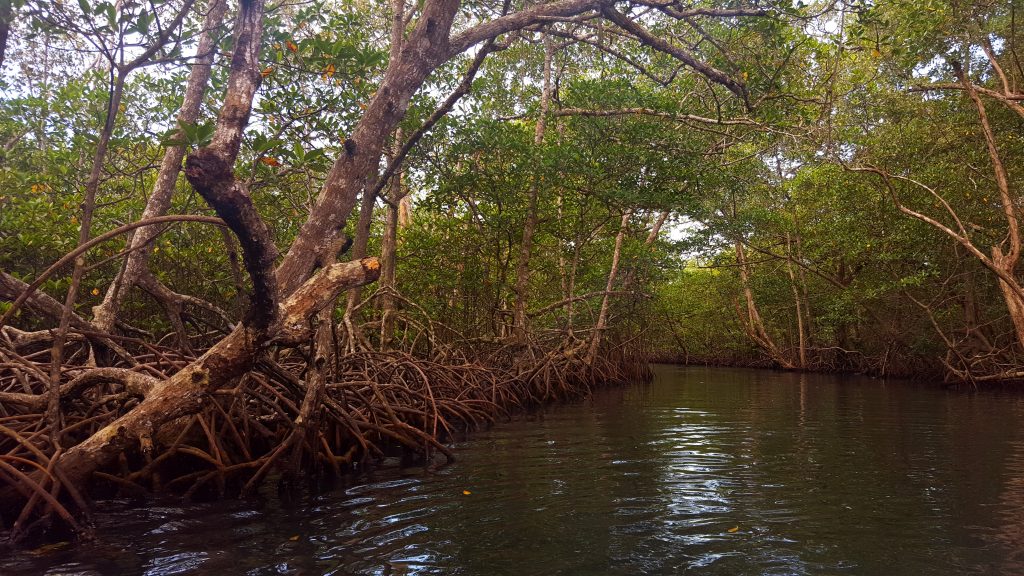
Another week, another sunburn. But this time it’s from the Panamanian sun, so I shall fondly cherish it as a souvenir. We have just emerged from the wilds of Bocas del Toro, a Caribbean archipelago in the northernmost province of Panama. Literally called “Mouths of the Bull,” the island chain is a maze of twisting channels and narrow coastal passages overgrown by thick mangrove stands, each darkly gaping maw standing ready to swallow thoughtless captains and their vessels.1
The half-submerged mangrove forests here in Bocas have a special ecological purpose in addition to the usual services they provide as coastal wind breaks and flood barriers; they provide extra habitat and feeding grounds for the multitudes of fish that populate the coral reefs here in Bocas.

As beautiful as the mangroves are, those coral reefs take the spotlight this week. We came to Bocas to snorkel around the reefs near Isla Colón and investigate how damselfish territoriality impact the grazing habits of other marine herbivores.
What does any of that mean? I’m glad you asked, my fictional mental construct of a reader!
Damselfish stand in the shadow of their more famous family members, the clownfish. They have many similar physical characteristics despite lacking that distinct orange-and-white coloration, which is why taxonomists decided to lump them all into the same family, Pomacentridae.
What makes them interesting is that they’re mean. Damselfish aren’t content to just mosey along and graze on the algae growing in and around the coral, but instead stake out small territories along the reef bed. Once one names itself the ruler of a particular area, it patrols the outskirts of its little 1x1m² kingdom and chases away intruders who try to graze on its coral.
Among other things, we wanted to see if a particular species of damselfish, Stegastes planifrons, discriminated and chased away more herbivorous fish than the carnivorous, predatory types of fish. So we educated ourselves on fish identification, found several threespot damselfish up and down the coast, and got to work snorkeling around and taking notes underwater with mechanical pencils on our trusty PVC pipe wrist cuffs.
The results? The poor herbivores got the brunt of all damselfish attacks. It seems our little S. planifrons are quite adept at discerning which species are most likely to thieve their food source.
We also measured the amount of herbivory (devoured greenery) in and around damselfish territories over time, and found that damselfish are awfully good at defending what’s theirs—algae flourished in their territory, but outside of their territory algae was rapidly eaten away to nothing. So these adorable little fish tyrants ultimately encourage marine algae diversity, as their pieces of land are refuges in areas where algae are otherwise overgrazed. It seems that a little apparent greediness can be beneficial to the community as a whole!
Certainly interesting for marine algal life, but perhaps it’s best not to take that Aesop too much to heart.

I wish that I had more photos to share, but my phone was ill equipped for submarine adventures. I’ll try to make it up in the next post!
Ciao for now!

